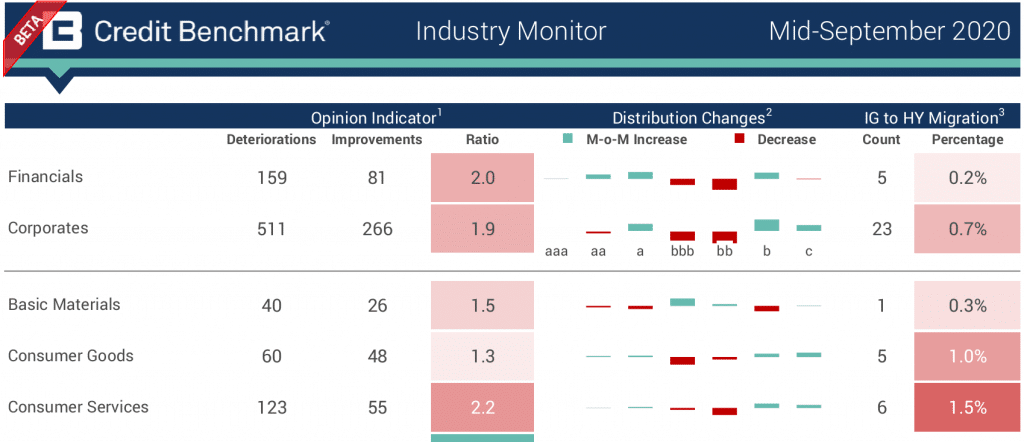Download the Mid-September Industry Monitor infographic below.
Credit Benchmark have released the mid-month industry update for September, based on the final and complete set of the contributed credit risk estimates from 40+ global financial institutions.
In the update, you will find:
- Opinion Indicator: Assesses the month over month observation-level net downgrades or upgrades.
- Ratio: Ratio of Deteriorations and Improvements calculated as Deteriorations / Improvements
- Distribution Changes: The increase or decrease in the percentage of entities in the given rating category
- IG to HY Migration: The absolute and relative movement from investment-grade to high-yield
Compared to the figures seen in the August End-Month Industry Monitor, the September Mid-Month Industry Monitor shows:
- The ratio of deteriorations to improvements for Corporates has improved since the end-August update (1.9:1 vs. 3.0:1)
- Travel and Leisure saw a large deteriorating ratio at 3.8:1, though it has improved since the end-August update (5.8:1)
- Health Care saw a 1:1 ratio of deteriorations to improvements
- Among the industries, General Retailers show the greatest percentage of Fallen Angels (2.5%)
Credit Benchmark will continue to provide regular reports on these migration rates. If you have any questions about the contents of this update, please get in touch.
For full details, please download the Mid-September Industry Monitor infographic here:
Download Industry Monitor

